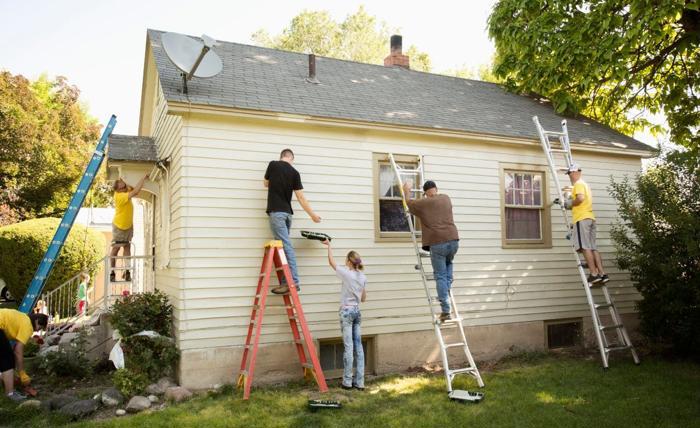
House flipping financing is a critical component for investors looking to purchase, renovate, and sell properties for a profit. This specialized form of funding allows real estate investors to acquire properties, cover renovation costs, and manage expenses until the property is sold. Whether you’re a seasoned investor or a newcomer to the house flipping game, understanding the nuances of financing can make or break your success. In this article, we’ll explore the various options for house flipping financing, how to secure it, and strategies to maximize your returns.
What is House Flipping Financing?
House flipping financing refers to the loans or funding methods used to purchase and renovate properties with the intent to sell them quickly for a profit. Unlike traditional home mortgages, these loans are typically short-term, high-interest, and designed to cover both the acquisition and rehabilitation costs of a property. The goal is to complete the project and sell the property before the loan term ends, often within 6 to 18 months.
The appeal of house flipping lies in its potential for high returns, but it comes with significant risks. Financing is often the biggest hurdle, as traditional lenders like banks may be hesitant to fund projects with uncertain outcomes. This is where specialized financing options come into play, tailored to the unique needs of flippers.
Types of House Flipping Financing Options
Hard Money Loans
Hard money loans are one of the most popular choices for house flipping financing. These loans are provided by private lenders or investment groups and are secured by the property itself. They typically have shorter terms (6-18 months) and higher interest rates (8-15%) compared to traditional mortgages. However, they offer quick approval and funding, often within days, making them ideal for competitive real estate markets where speed is essential.
The downside? Hard money loans often come with high fees and require a substantial down payment (20-40%). Investors must have a clear exit strategy, such as selling the property or refinancing, to avoid financial strain.
Private Money Loans
Private money loans come from individual investors, such as friends, family, or business associates, who are willing to fund your flip. These loans can be more flexible than hard money loans, with negotiable terms and potentially lower interest rates. However, they rely heavily on personal relationships and trust, which can complicate matters if the project doesn’t go as planned.
To secure private money, present a detailed business plan outlining the property’s potential, renovation costs, and expected profit margins. Transparency is key to maintaining good relationships with private lenders.
Home Equity Loans or HELOCs
For investors with existing properties, a home equity loan or Home Equity Line of Credit (HELOC) can be a cost-effective way to finance a flip. These options allow you to borrow against the equity in your primary residence or another property. Interest rates are typically lower than hard money loans (3-7%), and terms can be more flexible.
However, using your home as collateral carries significant risk. If the flip fails, you could jeopardize your personal finances or even lose your home. Careful planning and conservative budgeting are essential when using this method.
FHA 203(k) Loans
For those planning to live in the property during renovations, an FHA 203(k) loan can be a viable option. This government-backed loan allows you to finance both the purchase and renovation costs under a single mortgage. It’s ideal for first-time flippers who plan to occupy the property temporarily, but it comes with strict requirements, such as living in the home for at least 12 months.
The 203(k) loan is less common for pure flipping due to these restrictions, but it can be a good starting point for beginners with limited capital.
How to Secure House Flipping Financing
Securing house flipping financing requires preparation and a solid understanding of lender expectations. Here are key steps to improve your chances of approval:
- Build a Strong Credit Profile: While hard money lenders may be more lenient, a good credit score (typically 620 or higher) can unlock better terms and lower interest rates. Check your credit report and address any issues before applying.
- Create a Detailed Business Plan: Lenders want to see a clear plan for the property, including purchase price, renovation costs, timeline, and projected sale price. Include comparable sales (comps) to justify your profit projections.
- Work with Experienced Professionals: Partnering with contractors, real estate agents, and appraisers who understand flipping can strengthen your application. Their expertise adds credibility to your project.
- Shop Around for Lenders: Don’t settle for the first lender you find. Compare terms, interest rates, and fees from multiple sources, including banks, credit unions, and private lenders.
- Have Skin in the Game: Most lenders require a down payment or some form of personal investment. Be prepared to contribute 10-40% of the project cost, depending on the loan type.
Tips for Maximizing Returns with House Flipping Financing
Budget Wisely
One of the biggest mistakes flippers make is underestimating renovation costs. Create a detailed budget that includes a 10-20% contingency fund for unexpected expenses, such as structural repairs or permit fees. Over-leveraging through financing can erode profits if costs spiral out of control.
Choose the Right Property
The success of a flip often hinges on buying the right property at the right price. Look for homes in up-and-coming neighborhoods with strong demand and potential for appreciation. Use market research tools to analyze trends and identify properties with high return potential.
Minimize Holding Costs
Since house flipping financing often comes with high interest rates, time is money. Streamline renovations by working with reliable contractors and sticking to a tight timeline. The faster you can flip the property, the less you’ll pay in interest and holding costs like taxes and utilities.
Stage and Market Effectively
A well-staged home can sell faster and at a higher price. Invest in professional staging and high-quality photos to make your property stand out. Work with a real estate agent who specializes in flipped homes to attract motivated buyers.
Common Pitfalls to Avoid
Flipping houses can be lucrative, but it’s not without challenges. Avoid these common mistakes:
- Overpaying for Properties: Overbidding in a competitive market can eat into your profits. Stick to your budget and avoid emotional purchases.
- Underestimating Renovation Costs: Always get multiple contractor quotes and factor in unexpected expenses.
- Ignoring Market Trends: A hot market can cool quickly. Stay informed about local real estate trends to time your sale effectively.
- Neglecting Legal Requirements: Ensure all renovations comply with local building codes and permit requirements to avoid costly delays or fines.
Conclusion
House flipping financing is the backbone of any successful flipping venture. By understanding your options—hard money loans, private money, HELOCs, or FHA 203(k) loans—you can choose the best fit for your project and financial situation. Preparation, careful budgeting, and strategic planning are essential to securing financing and maximizing profits. With the right approach, house flipping can be a rewarding way to build wealth in the real estate market. Start by researching lenders, refining your business plan, and targeting properties with high potential to set yourself up for success.




